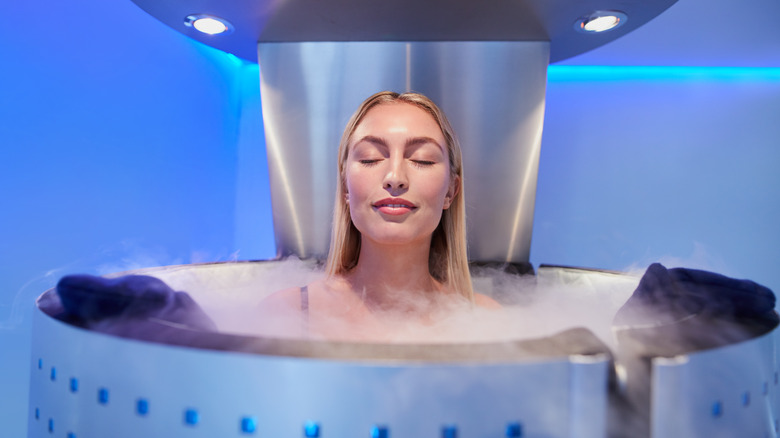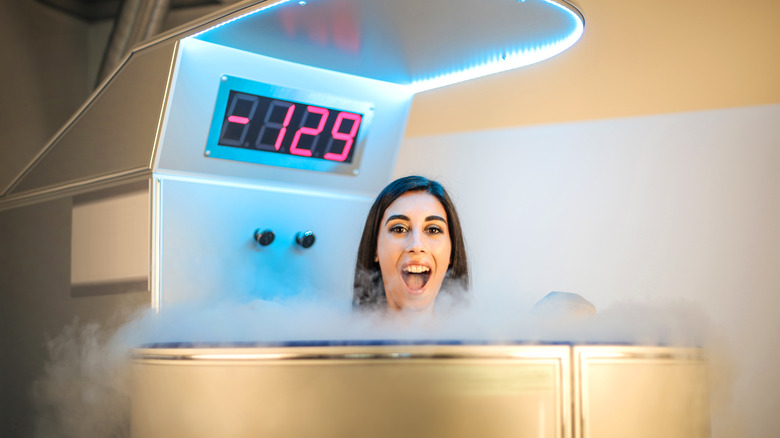What Really Happens To Your Body When You Do Cryotherapy
When you think of relaxing spa treatments, sitting in a freezing cold metal tank might not be the first image that pops into your head. But that's exactly what happens during a whole-body cryotherapy session, a popular new alternative treatment that uses extremely cold temperatures to help improve physical and mental health (via University of Utah Health). While many people report immediate benefits from standing in a cryotherapy chamber for a few minutes, the science isn't settled on whether or not the treatment works well for everyone who uses it.
Cryotherapy, or cold therapy, isn't necessarily a new or groundbreaking concept. Treating pain with ice packs, cold sprays, and ice baths is something that athletes and people with an injury or certain medical conditions have used successfully for years (via Healthline). The ancient Egyptians used cold treatment to relieve pain and reduce inflammation (via the Journal of the Royal Society of Medicine). Doctors who treat skin conditions or even certain cancers use localized cryotherapy to freeze tissue in order to remove it and promote new cell growth in the affected area (via the Cleveland Clinic). If you need to have a skin tag or a suspicious mole removed, your dermatologist may apply liquid nitrogen at temperatures of less than -300 F to it, which essentially freezes the unwanted cells. And while there are known benefits of medical cryotherapy, the use of cold therapy outside of medical procedures has also been hailed as an effective therapy for many ailments.
Does cryotherapy really work?
Whole-body cryotherapy involves standing in a metal cryotherapy chamber, where liquid nitrogen is pumped in at temperatures of around 200 F below freezing (via University of Utah Health). One cryotherapy session typically only lasts between two and three minutes, which is enough time to cool down your skin but not cool your core temperature to dangerous levels (via Cryotherapy of Wisconsin). The idea is that the cooling of your body decreases blood flow to the surface of your skin. This may help send a signal to your brain to produce chemicals that promote healing. It's generally considered a safe procedure, although it's not typically done under medical supervision, so you should check with a doctor before undergoing treatment (via Medical News Today).
So what are the potential health benefits of exposing yourself to incredibly cold temperatures? One very small study of 60 people showed a possible benefit of cryotherapy for the treatment of depression and anxiety (via Archivum Immunologiae et Therapiae Experimentalis). The anti-inflammatory properties of whole-body cryotherapy could be beneficial to those patients who are at risk for Alzheimer's and other types of dementia (via Healthline). Some people hail cryotherapy as an anti-aging treatment, but thorough scientific studies have not yet supported this claim. If you decide that whole-body cryotherapy is right for you, remember to keep your expectations reasonable and only try it out if a doctor says it's ok.


